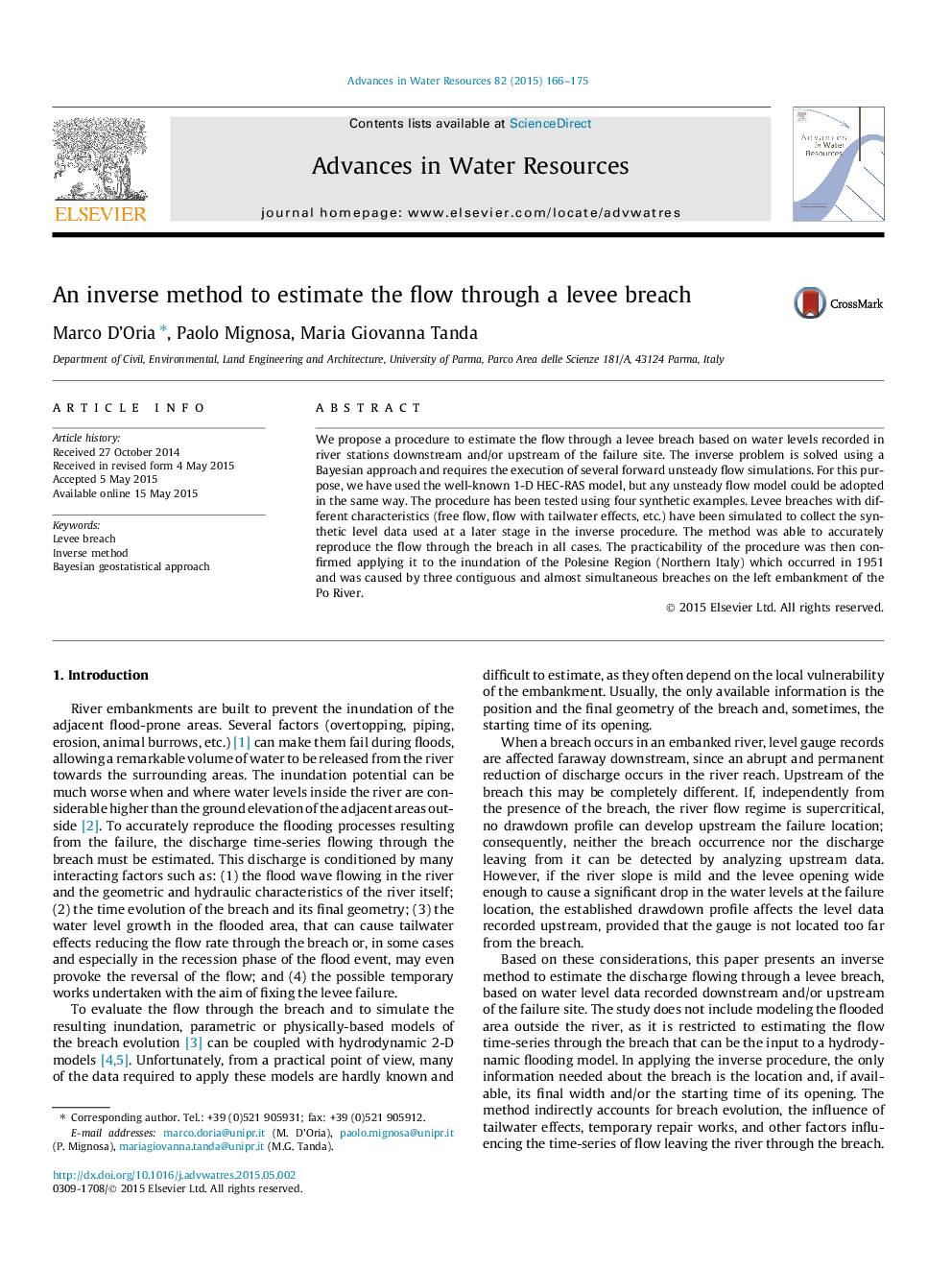| Article ID | Journal | Published Year | Pages | File Type |
|---|---|---|---|---|
| 4525385 | Advances in Water Resources | 2015 | 10 Pages |
•We propose an inverse method to estimate the flow through a levee breach.•Breach evolution and hydraulics conditions are indirectly taken into account.•Only stage hydrographs are required as boundary conditions for the forward model.•Any forward unsteady flow model can be used to apply the proposed approach.
We propose a procedure to estimate the flow through a levee breach based on water levels recorded in river stations downstream and/or upstream of the failure site. The inverse problem is solved using a Bayesian approach and requires the execution of several forward unsteady flow simulations. For this purpose, we have used the well-known 1-D HEC-RAS model, but any unsteady flow model could be adopted in the same way. The procedure has been tested using four synthetic examples. Levee breaches with different characteristics (free flow, flow with tailwater effects, etc.) have been simulated to collect the synthetic level data used at a later stage in the inverse procedure. The method was able to accurately reproduce the flow through the breach in all cases. The practicability of the procedure was then confirmed applying it to the inundation of the Polesine Region (Northern Italy) which occurred in 1951 and was caused by three contiguous and almost simultaneous breaches on the left embankment of the Po River.
